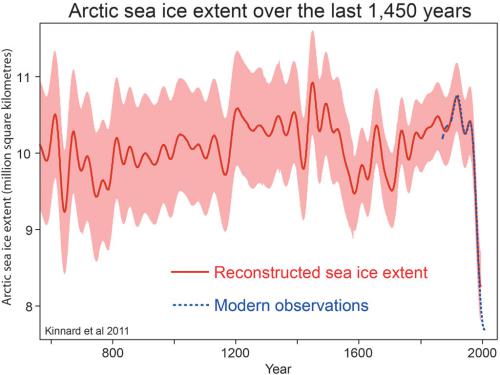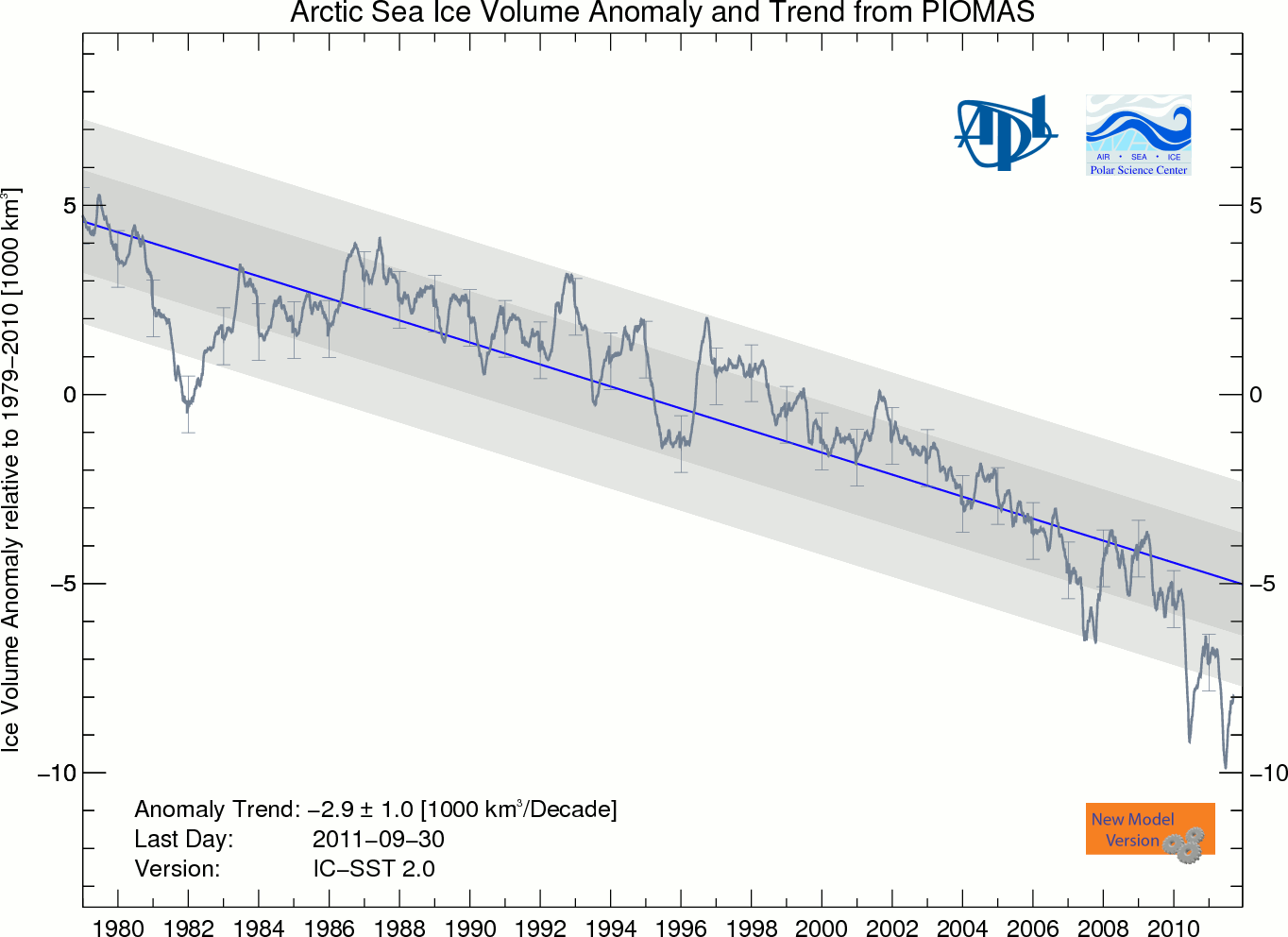
Many climate change "skeptics" obsess over the 'hockey stick', and their discussion inevitably leads back to 1998, when climate scientist Michael Mann first published his paper indicating that current global warming was anomalous in the last 1000 years or so. In plain language, Mann's work suggested that current warming was likely due to mankind's carbon dioxide pollution, not any as-yet-unidentified, or yet-to-be-discovered or observed natural phenomenon.
Despite the "skeptics" cherry-picked focus on a peer-reviewed paper more than a decade old, the science has moved on considerably since then. Paper after paper has basically affirmed that current warming is outside the bounds of natural variation, and therefore likely due to human activities. For example we have seen a sea level hockey stick, an underwater hockey stick, a South American hockey stick, an Arctic summer temperature hockey stick, a tropical glacier hockey stick, a North American mountain snowpack hockey stick, a glacier length hockey stick, and warming of Atlantic water into the Arctic hockey stick.
Into this league of hockey sticks, we have a just published scientific paper, (Kinnard [2011]), which shows that the Arctic sea ice retreat is also a hockey stick, and that the present rate of melt in the Arctic summer is unprecedented in the last 1,450 years. See figure 1. (Note that the hockey stick blade is facing down in this reconstruction).

Because Arctic sea ice is influenced by both air and water temperatures, the study authors use a combination of Arctic ice core, tree-ring and lake sediments to reconstruct Arctic conditions over the last 2,000 years. As is often the case with these proxy reconstructions, the authors found the error bars in the reconstruction (the uncertainty) increased further back in time, due to a decreasing number of proxy records, and was not useful past 1,450 years ago.
When compared (validated) against historical sea ice observations it was found that the reconstruction not only had a dominant temperature-related signal, but that the proxy-based reconstruction also had a second signal which corresponded with variations in sea ice cover (extent), therefore confirming the 2nd network signal was a proxy for Arctic sea ice cover (as shown in figure 1).
Clearly there are periods in the reconstruction where rapid rates of ice loss occurred, but what stands out is that the length and rate of present day melt is unprecedented in the entire 1,450 year-long reconstruction. This is consistent with the Arctic summer temperature hockey stick (Kaufman [2009]) and warming of Atlantic water into the Arctic hockey stick (Spielhagen [2011]).
2011 saw the 2nd lowest summer sea ice extent on record (after 2007), and even more dramatically, this year saw the lowest ever recorded volume of Arctic summer sea ice.

This latest 'hockey stick' not only reinforces that current conditions in the Arctic are much warmer than the so-called Medieval Warm Period, but that sea ice is currently disappearing at a sustained speed that is unmatched in the last 1,450 years.
Posted by Rob Painting on Thursday, 24 November, 2011
 |
The Skeptical Science website by Skeptical Science is licensed under a Creative Commons Attribution 3.0 Unported License. |